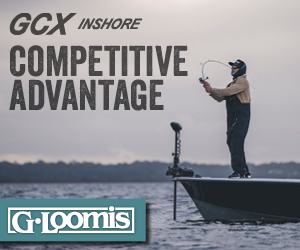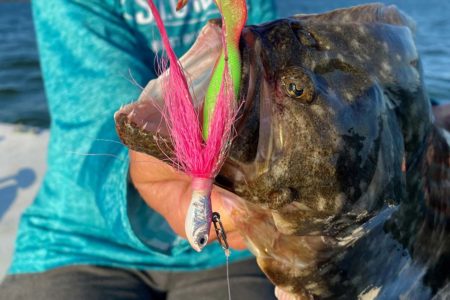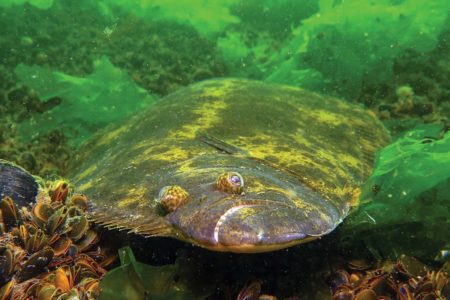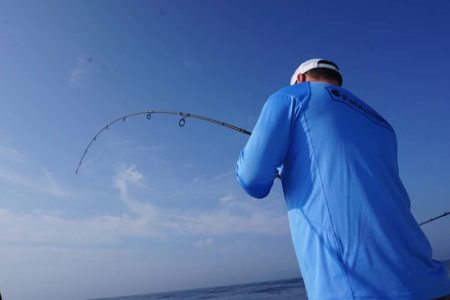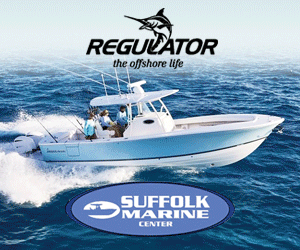Finding the best spots around structure, working out currents, wind direction and speed, and making short drifts are all part of precision fluking.
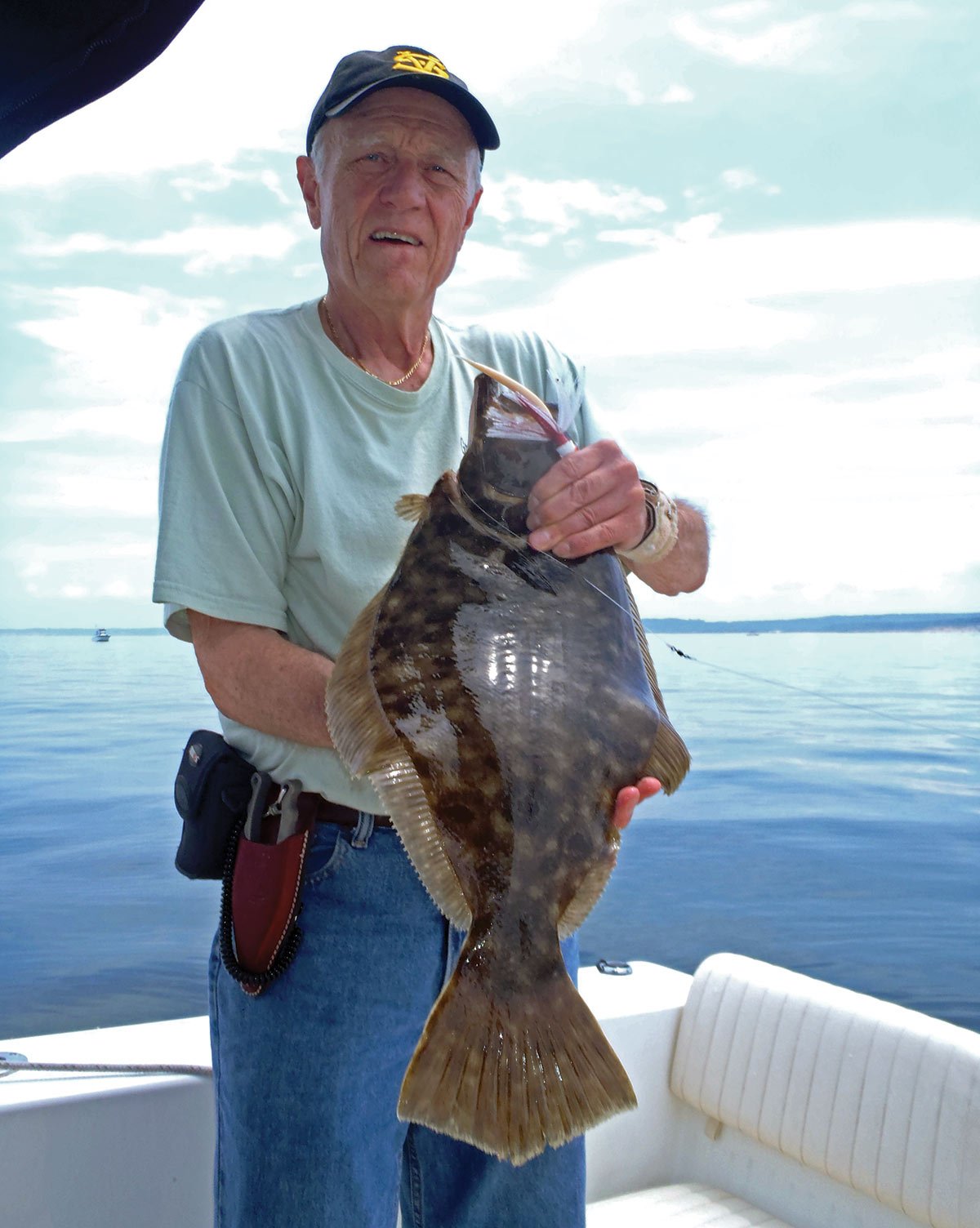
I never was much for dragging a sinker, long leader, and a baited hook for fluke simply because I enjoy more interactive fishing. That is, I prefer to have input into the action of my bait/lure and have direct contact with the fish. In the ‘70s and ‘80s I lost much of my motivation to fish for fluke due to a lack of big fish in the estuary, small fish (14-inch size limit), and a lack of interest in passive fluking. However, when I did fish for fluke I tended to use bucktails and light tackle to make the experience more fun. However, recent larger size limits and smaller bag limits keep more and bigger fluke in the estuary longer, stoking a renewed interest in bucktailing for fluke.
I began fluke fishing with bucktails a long time ago. So, sometimes my dad and I drifted in Petty’s Bight for fluke; he with his traditional rig and me with a bucktail and squid strip. I also used bucktails for fluke in Smithtown Bay with a friend as far back as the 1960s. Today, amazing electronics, more and bigger fluke, and better reports have revolutionized fluke fishing. Among other things, these advances allow us to fish precisely for fluke, and the only way I want to do that is with bucktails.
Rocky Reefs
Some of the largest fluke like to hang around rugged structures such as rocky reefs and wrecks. One friend who specializes in fishing ocean wrecks for fluke always seems to come back with a 5- to 8-pound fluke from those wrecks, and then there were those occasional 10-pound doormats. He would, from time to time, describe his approach and it struck me as being quite precise. First, he knew from experience which part of the wreck the big fluke preferred. He told me he did not drift because it was, even on rather calm days, impossible to predict the exact direction of the drift, and if his drift was off even a little he’d either miss the fish completely or snag the wreck. He anchored, but anchoring in a wavy ocean trying to set up on the exact spot he wanted wasn’t easy. He told me he’d lost more than one anchor to the wreck and on a typical outing made five or six attempts before he was satisfied with his position.
Inshore
Although fishing for fluke in the bays, inlets, and the Sound doesn’t present as many hazards or difficulties, precision positioning is just as important. Let me offer an example. Many areas around Long Island have sand or shell bars created by currents and waves. These bars change shape, shift positions, and appear and disappear over time. Fluke are ambush hunters, which is why the doormats hang around heavy structure waiting for a meal to saunter by, but also why fluke often line up along the edges of a bar. However, simply setting up a drift over the bar regardless of the point where you cross the bar tends to lead to sporadic picking. Why? In a word, hydrodynamics, or how water moves.
Consider an inlet bar. From the vantage point of a boat it may appear that water moves over a bar the same way from the beginning of the bar to its tip. However, that may not be the case, especially near the bottom. Since the bar is wide at its base and pointed at the tip, since the bar is not of uniform height, and since the sides of the bar are irregular and not a smooth straight line, water movement near the bottom will be different than at the surface.
Go With The Flow
Below, water flows from a deeper spot towards the bar. As it approaches a shallow area, some water is diverted toward the surface, another portion is turned and runs parallel to the edge of the bar, while a third component gains more speed and runs over the crest of the bar. Now, bait tends to follow the current and, since the current in the deeper water is not moving fast, the bait drifts along yet maintains swimming control, and the school remains together. However, when the water and bait move towards the bar, the bait is caught in the resulting turbulence. Since the bait can no longer control its direction and speed, the school splits into pods. Bait pods diverted to the surface may interest stripers and blues, but fluke prefer the bottom. The pods of bait that are carried along the edge of the bar may still maintain swimming control because the water tends to move linearly and there is less turbulence. The pod or pods that are carried over the crest of the bar will be in turbulent water and as the bait passes the crest there is a tendency for the turbulence to form a vortex that drives the bait towards the bottom. Okay, hydrodynamics may not be your “thing” and right about now you have a headache, so forget all the nitty gritty of this and think only about bait movement and ask; If you were a fluke where would you hang out at this bar to intercept bait and expend the least energy?
Instinctive Behavior
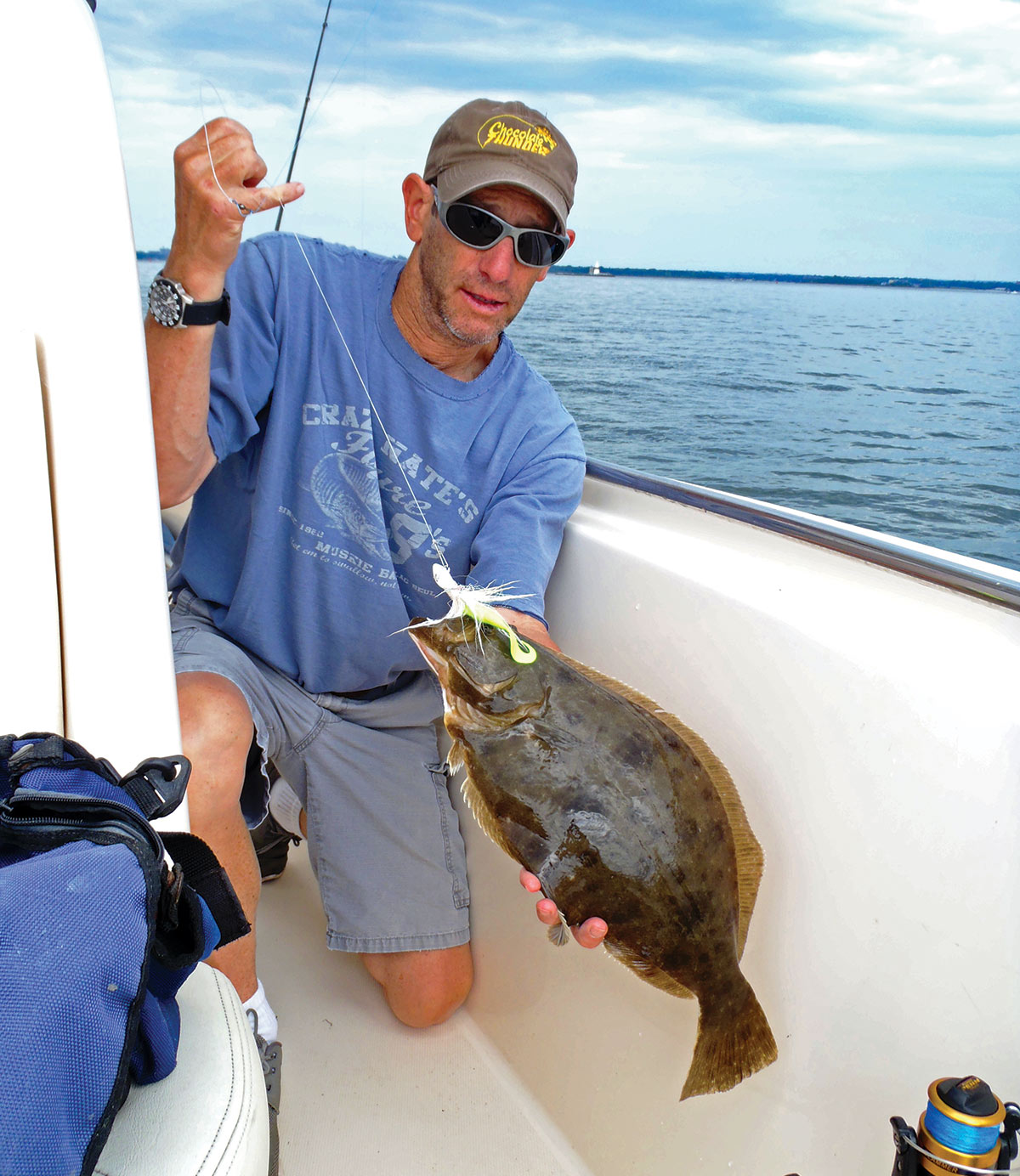
If you selected the place where the current pushes the bait over the crest of the bar and into a vertical eddy, you’d be correct. Okay, stay with me for one more moment, because I must tell you the rip over the crest of the bar will not be uniform from end to end. There are always a few higher spots on the crest of the bar and the current will be fastest here and the turbulence greatest. Such areas are rarely wider than 10 yards, but are the places where the most fluke will congregate because instinctively, as ambush hunters, they congregate where their prey will be most helpless. That’s the backdrop, but the point is that precision fluking begins by understanding why the best spots are the best spots.
Both on the beach and in a boat, I take a minute or two to survey the area before I begin fishing. I’ve noticed, most fishermen don’t. I mention this repeatedly to the surf anglers I mentor. “Why did you begin casting immediately? Did you see something I missed? Did I begin immediately, or did I stand and look first?” I hope these questions will have an impact on them and explain why I caught fish before they did.
So, in a boat I begin by studying the depth recorder carefully, and watch how the boat drifts. Of course, I’m familiar with the location so I’m confident that I’m in the right general area, but I want to find that special part of the structure that is the “sweet spot” that will produce the most fluke. When anglers take time to look, notice, evaluate, and interpret what they see and hear before they fish, the results are usually better.
Evaluate Structure
Structures and edges in the heart of the estuary may not be as dramatic as an ocean inlet piece, and the currents may not be as strong, but the principle is the same and should be applied in the same way. That is, find the down current edge, find the high points, look for bait schools near the bottom on the depth recorder, and make short drifts near bait schools and high spots found near the down tide edge. Short drifts are also an essential part of this precision approach. Even if you catch a fish, resist the temptation to keep going, reel in the bucktail and head back around to begin another short drift in order to spend more time in productive water. After all, why not fish in the spot where the fish are?
Most modern depth recorders with the help of GPS allow the angler to mark way-points, or specific locations on the bottom. Generally, I don’t mark a way point where I caught one fish, rather where the crew has a number of hits and catches a few nice fish. Don’t underestimate the need for baitfish to be present. Even the spots that are physically the best in an area will not produce if there is no food present. There are exceptions, such as mantis shrimp that don’t show up as separate from the bottom. However, mantis shrimp bites occur in narrow time periods around the moons. Most of the time the bait is sand eels in spring and early summer, and peanut bunker and other young of the year fish in late summer and early fall.
The Drift
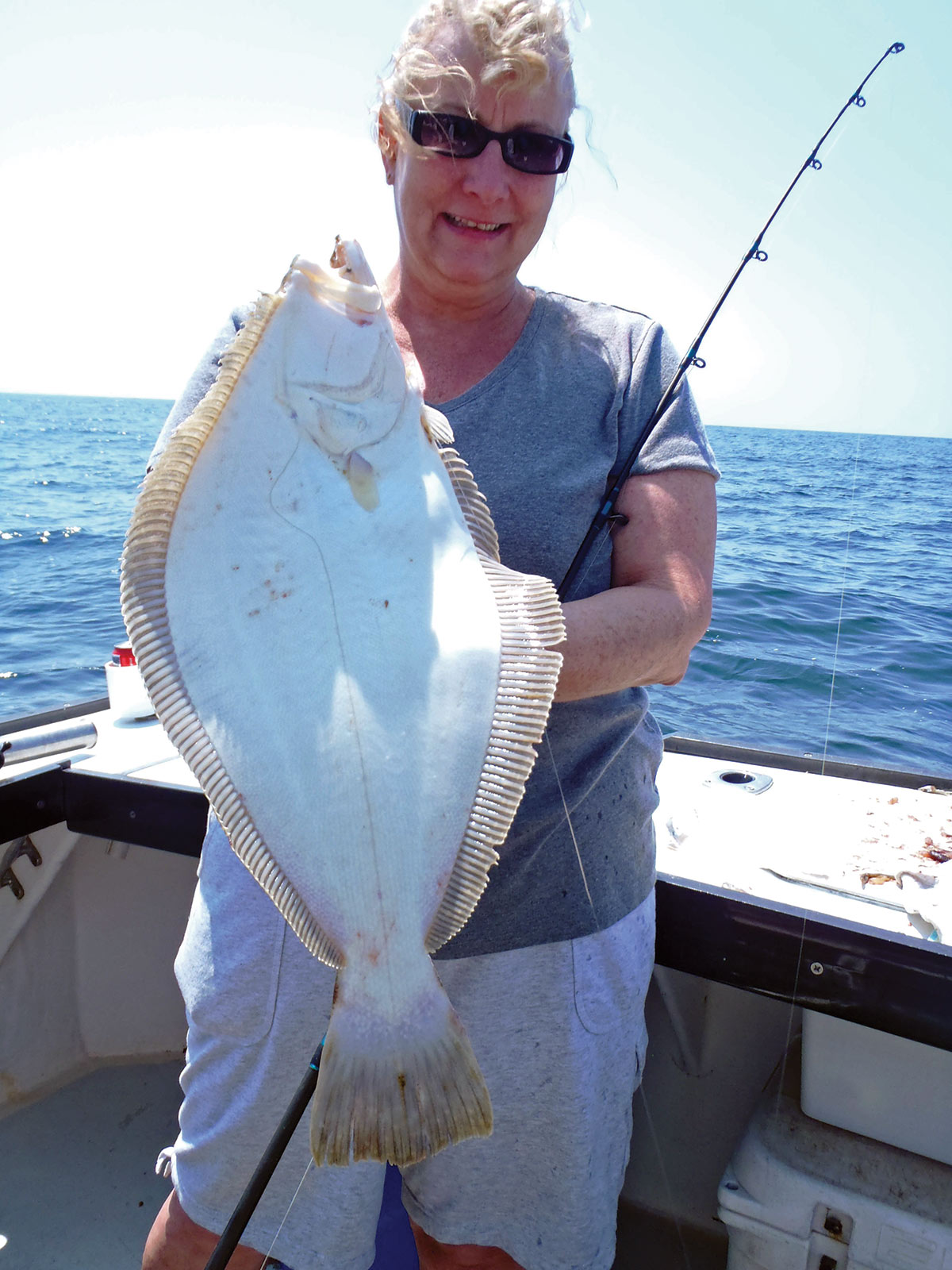
Take time to set up the drift. The goal is to repeat a productive drift. First, stop the forward momentum of the boat when you throttle back. Second, gauge your position up-tide of the piece. Third, begin the drift so as to pass over the one or two sweet spots you’ve identified. Fourth, shift in and out of gear to compensate for changes in wind and your starting point. Fifth, don’t lower the bucktail until you are about to traverse the piece. Why do I wait? The most effective bucktail presentation for fluke is straight up and down, and although the combination of current and wind may be perfect, most of the time there are glitches so that just as you approach productive water there is scope in your line away from the boat. By waiting before making the drop, my line is straight vertically, my presentation at its best, and I am much less likely to pick up seaweed and other bottom debris. Once I’ve passed the prime section of the piece I reel in quickly and begin to set up for another drift.
Finding the best spots on a piece, working out currents, wind direction and speed, and making short drifts are all part of precision fluking, but not all of it. That’s right, there’s more. Tackle and bucktail selection are important, too. Although heavy gear and bucktails may be essential in deep water fluke spots such as Montauk and deep wrecks, light is better in the estuary. I prefer either a 6-foot medium power bait casting rod or a 6-1/2 to 7-foot medium power spinning rod with a fast action tip matched to a VS 100 spooled with 20-pound test Sufix Performance braid and finished with a short length of 30-pound test Perlon leader. When I’m casting for stripers and blues I use a paperclip style snap because I change lures frequently, but when fluking I tie direct to the bucktail and the other end of the leader sports a small 50-pound test Spro swivel. With a little experience, you will know the right size bucktail given wind direction and speed, current, and depth. I prefer white bucktails and thread on some Gulp. Natural baits work too, but aren’t as durable as Gulp. In general, use the lightest bucktail you can and remain more or less straight up and down.
I’ve made many, many fluke trips, yet the number of days with constant action are few. Yes, those trips are special, but I don’t count on having one of them. I gear up for a good day but know I’ll need to work for success and success is often spelled p-r-e-c-i-s-i-o-n.
